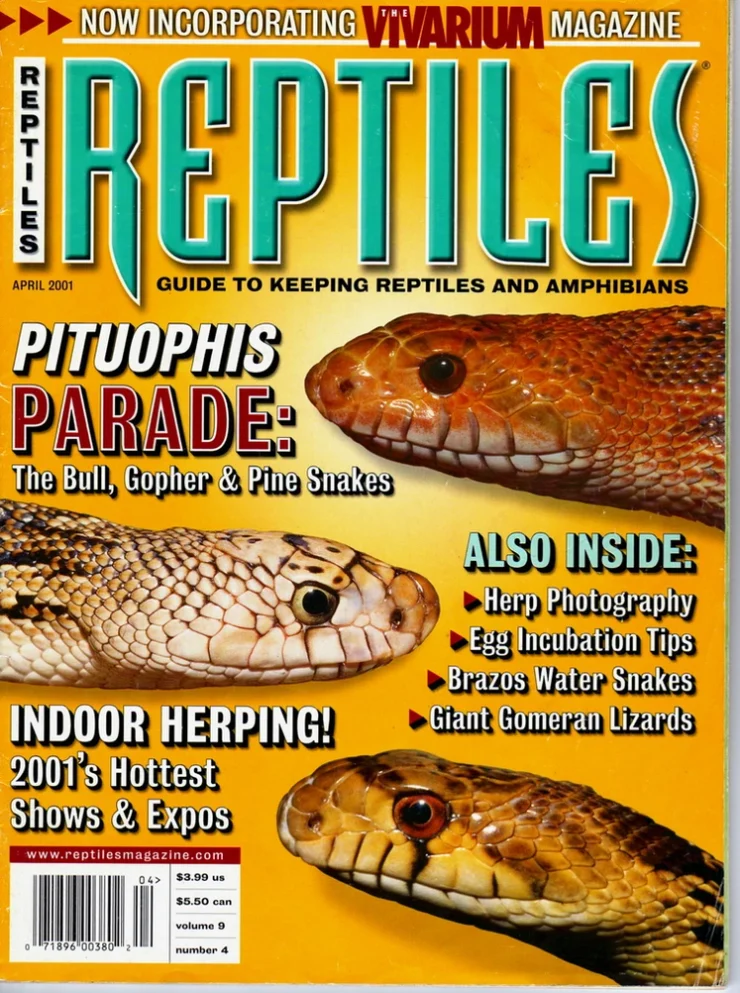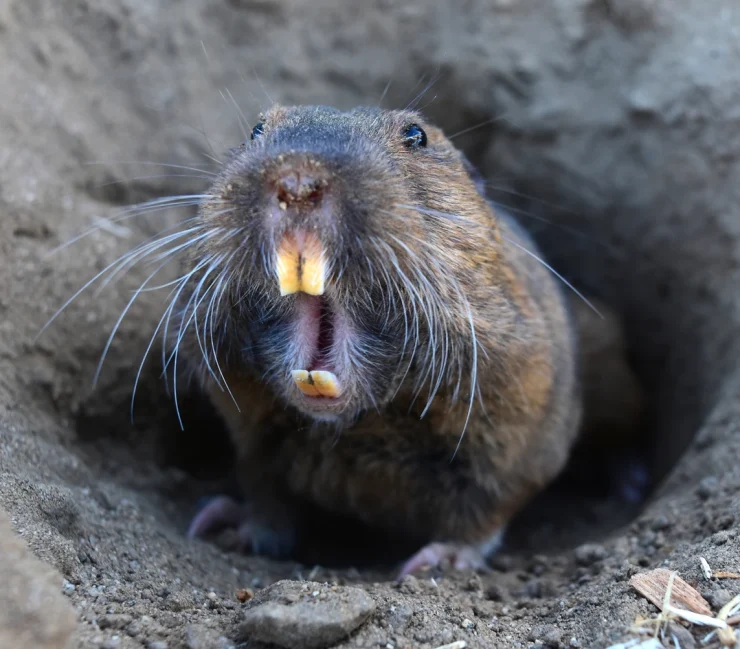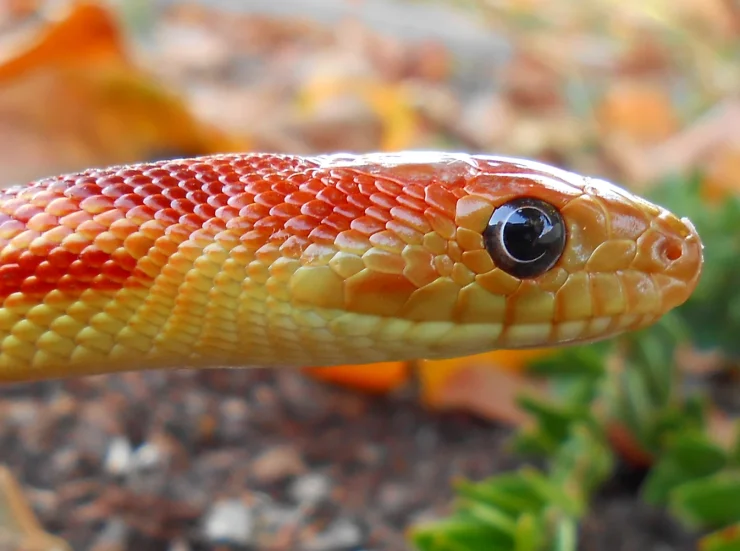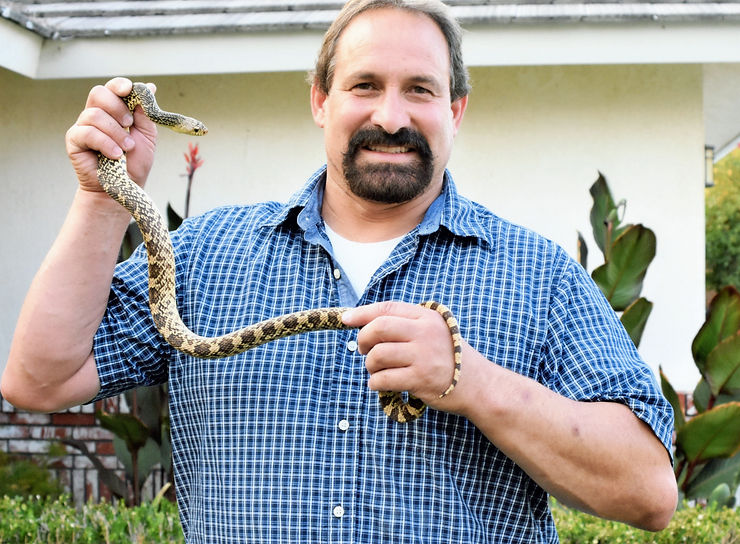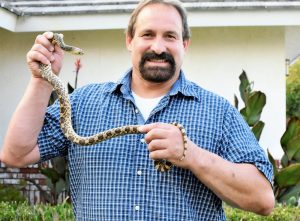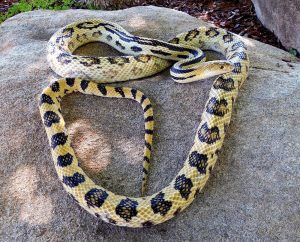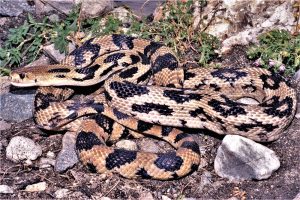All Known Pituophis in the World
1. Pituophis catenifer affinis (Hollowell, 1852) Sonoran Gopher Snake
2. Pituophis catenifer annectens (Baird & Girard, 1853) San Diego Gopher Snake
3. Pituophis catenifer catenifer (Blainville, 1835) Pacific Gopher Snake
4. Pituophis catinifer coronalis (Klauber, 1946) “extinct” Coronado Island Gopher
5. Pituophis catenifer deserticola (Stejneger, 1893) Great Basin Gopher Snake
6. Pituophis catenifer fuliginatus (Klauber, 1946) San Martin Gopher Snake
7. Pituophis catenifer pumilis (Klauber, 1946) Channel Islands Gopher Snake
8. Pituophis catenifer sayi (Schlegil, 1837) Common Bull Snake
9. Pituophis deppei deppei (Dumeril, 1853) Mexican Pine Snake
10. Pituophis deppei jani (Cope, 1860) Northern Mexican Pine
11. Pituophis insulanus (Klauber, 1946) Cedros Island Gopher Snake
12. Pituophis lineaticollis lineaticollis (Cope, 1861) Cincuate Bull (Mexican-Lined bull snake)
13. Pituophis lineaticollis gibsoni (Stuart, 1954) Guatamalan Bull (Gibson’s bull snake)
14. Pituophis melanoleucus lodingi (Blanchard, 1924) Black Pine Snake
15. Pituophis melanoleucus melanoleucus (Daudin, 1803) Northern Pine Snake
16. Pituophis melanoleucus mugitus (Barbour, 1921) Florida Pine (Southern Pine snake)
17. Pituophis ruthveni (Stull, 1929) Louisiana Pine Snake
18. Pituophis vertebralis bimaris (Blainville, 1835) Mid-Baja California Gopher Snake
19. Pituophis vertebralis vertebralis (Blainville, 1835) Cape Gopher Snake
*Vertebralis and Bimaris are sometimes considered Pattern Classes of Vertebralis. (e.g. L. Grismer 2002)
Other authorities place them as subspecies of catenifer. I’ve listed them as vertebralis species and bimaris & vertebralis subspecies.
In the future, we may soon find other Pituophis warranting nomenclatorial distinction.
Fotos de Topera (Pituophis catenifer) · iNaturalist Mexico
for so many GOPHER, PINE, and BULL SNAKE images.
PATRICK HOUSTON BRIGGS PITUOPHIS
from Santa Rosa Island of the Channel Islands National Park, coastal California
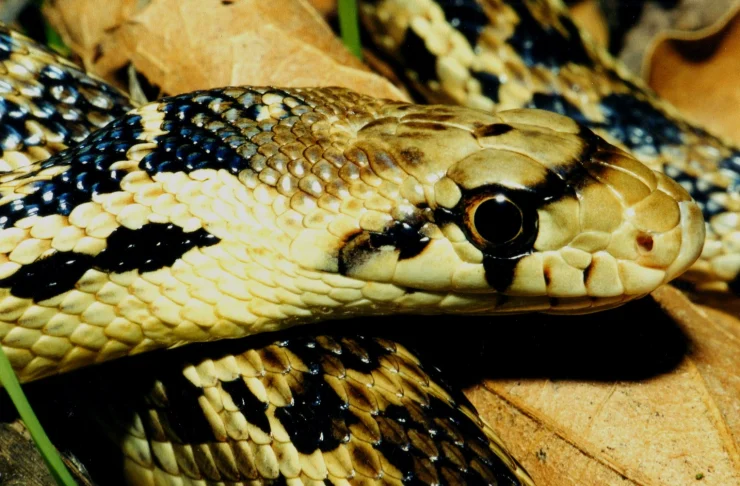
Gopher Snakes, Pine Snakes, and Bull Snakes
The Genus Pituophi
By Patrick Houston Briggs
The genus Pituophis pronounced “pit-chew-oh’-fis” is a collection of constrictors with similar characteristics classified within the ophidian family Colubridae. These reptiles are commonly known as the gopher snakes, pine snakes, and bull snakes. Like all the snakes, they are scaled ectotherms that many refer to as cold-blooded, and biologists, as poikilothermic, meaning that their body temperature becomes nearly the same as the environment nearby, and so they are dependent upon their immediate surroundings; they must thermal-regulate their bodies to manage cooler or warmer temperatures. This means for wild snakes on cooler periods, for example, they may find a warmer spot on a rock or on the ground warmed by the sun, remaining there until they achieve a comfortable body temperature. On the other hand, if they are too warm, they might relax in a shady area, slither into a stream, or they may burrow or escape down a rodent hole to become cooler. They must do this to carry on normal body functions including digesting food. These snakes seem to function best in temperatures from about 72 to about 85 degrees Fahrenheit. Like other snakes, they have no external ears, and they have no moveable eyelids, but instead, each eye is protected by a clear layer of skin called a brille. Each month or so, as the brille becomes scratchy from pushing against rocks, wood or through sand and soil, it will be renewed to its clarity only after the snake sheds or sloughs its outer skin including the head and the eye brilles or caps. Snakes shed or slough their outer skins periodically as they grow larger or soon after a serious injury. The number of times they do this depends on factors such as weather, food consumed, and growth. Before sloughing off the outer skin, their eyes will cloud up to murky blue color due to the lubricating fluids that separate the outer skin from the newer underneath. The body color also darkens and is less vivid. Gradually in about a week or so, the eyes clear up and the body becomes nearly its normal color. The snake may choose to soak in water to help separate the skin more efficiently. Soon after this step the snake will rub its snout on rocks or other objects to loosen the skin to slide it backward and inside out like a sock being rolled back toward the rear of the body. If the outer skin on the body is wet enough, the skin will be cast off in one or two pieces, but if it is not, it will come off in many pieces.
Currently, taxonomists do not agree on everything regarding the systematics of this genus. So, until all authorities are unanimous regarding these taxa, 7 species with 19 subspecies will be recognized on this Pituophis website. Some authorities attribute the scientific name Pituophis to the Latin word pituitarius referring to phlegm or mucus which could be associated with the raspy hissing produced by these snakes when they become upset. Others believe that because Pitys is Greek for “pine” and Latin for “pinecone”, it is very appropriate for the pine snake species, therefore, it is assigned to this genus. The ophis portion of this scientific name is Greek for snake. Holbrook, actually, established the first Pituophis in 1842 upon the northern form of pine snake which previously, Daudin called Coluber melanoleucus in 1803. Coluber is Latin for snake.
Many ophidian species can be identified by scale number, arrangement, and other characteristics. The scales on the bodies of the Pituophis group are heavily keeled above becoming less so progressively down each side towards the belly. Also being noteworthy for identification is that although most Colubrid individuals have only 2 prefrontal scales, within the genus Pituophis, with the exception of a few species, and some individuals, there is usually a trademark of 4 pre-frontals, at least on most individuals. Others may vary a little within a species, with some individuals deviating from the rule, having only 2 widened, and others having azygous or intermediate scales between the pre-frontal and frontal or preoculars especially within geographical intergrade zones.
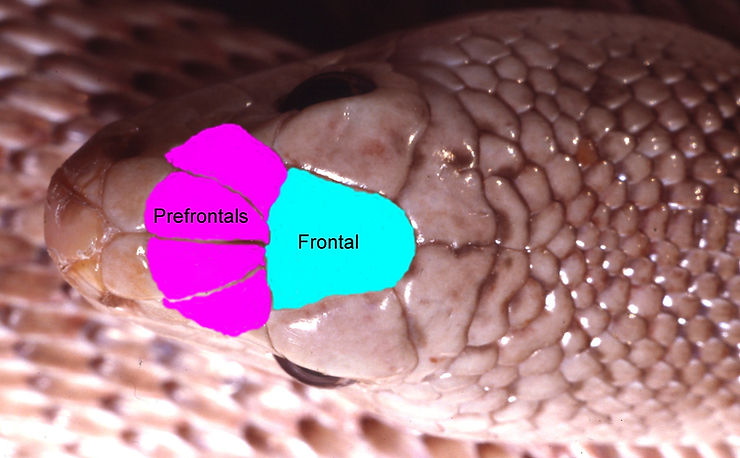
In other Colubrid snakes, usually only two PREFONTAL SCALES make contact with the FRONTAL SCALE as shown below. Within the Pituophis genus, Pituophis deppei and Pituophis lineaticollis which include 4 subspecies are the only ophidians that follow this path.

Pituophis catenifer deserticola x annectens INTERGRADE OF GREAT BASIN and SAN DIEGO races of gopher snake from Lancaster, California locality. Image By Patrick Houston Briggs 2014 courtesy to Jerry Hartley.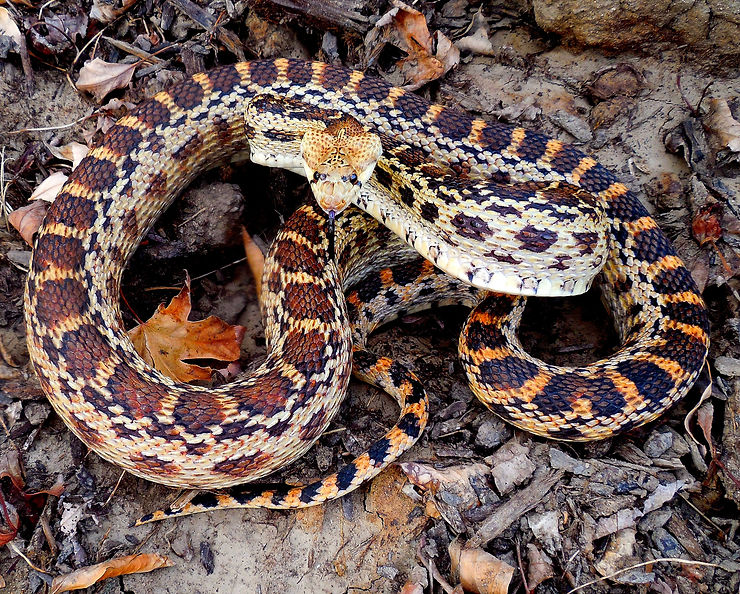
Pine snakes, gopher snakes, and bull snakes are nonvenomous and although a bite from a snake defending itself may be painful due to its small, sharp teeth, the bite is harmless to humans. Most, except a few island forms, can grow to be robust, powerful constrictors that usually hunt rodent prey such as gophers, rats, mice, very young rabbits, and squirrels. They will also take small birds, the fledglings, and their eggs, especially, ground nesting birds. The younger snakes will feed on lizards, very young rodents, and occasionally, frogs or smaller snakes. Because they have been found in the stomachs of dissected Pituophis, there are a few biologists that believe that insects are also eaten; I believe that those insects found inside these snakes, were in the stomachs of the prey that had been consumed. I’ve actively worked with, researched, and observed these snakes for over 50 years. I’m quite sure that Pituophis don’t actively search out insects for food. Nevertheless, if you rubbed the wet mouth of a young mouse or “pinkie” or the blood of a lizard’s severed tail on an insect or some small object, because of its alluring food scent, it may trigger the feeding instinct in a captive snake, causing it to actually take it in its jaws and possibly, swallow it. This is because the snake is readily able to recognize the food scent and taste through a paired olfactory vomeronasal mechanism called the “Jacobson’s organ” located above and inside the mouth merging into the nasal region. It receives particulate molecules when the forked tongue is extended and retracted back into the mouth. To a snake, this mechanism is paramount for identifying things, and it is assisted by a bifurcated tongue that is more useful for object recognition and for finding its way about than its eyesight! The snake could survive without its eyesight, but not without its tongue and the mechanism within the mouth that assists it.
Bull snakes, gopher snakes and pine snakes all have a re-enforced snout scale called a rostral. Because of their fossorial (burrowing) habits, a rostral nose plate to assist in moving about through the soil, gravel, or sandy substrate is necessary. Within the pine snake group melanoleucus, ruthveni, and to some degree, the bull snakes, Pituophis catenifer sayi, this snout shield or scale is exaggerated and is raised much higher than adjacent scales to give it additional strength.
Pituophis melanoleucus lodingi BLACK PINE SNAKE This is a large subadult Boyer line individual photographed closeup on the left side head showing the ROSTRAL SCALE RAISED or EXAGGERATED. Photo Image By Patrick Houston Briggs 2014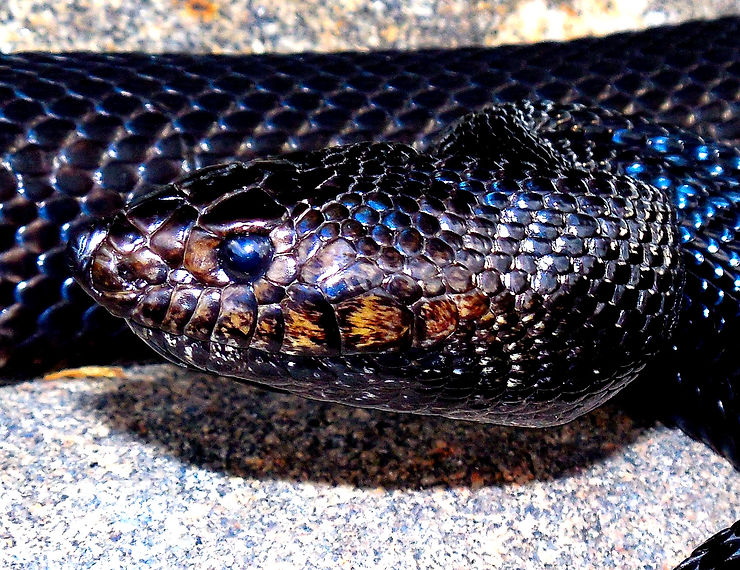
Generally, Pituophis are clad in light ground coloration with dark blotches and spots, but wild individuals have been found in nearly every race that occurs blotched, to occasionally occur with a striped pattern morph (phenotype). Not only are aberrantly patterned individuals common, but color and pattern variation is extreme, both at the specific and subspecific levels of Pituophis. In the pet trade, snake breeders benefit by specializing in many varieties of aberrations that are striking and beautiful, and so they select specific individuals with common striking mutations to breed together.
Pituophis catenifer catenifer PACIFIC GOPHER SNAKE aberrant blend striped albino
Photo By Patrick Houston Briggs
Pituophis catenifer sayi BULL SNAKE (Red Morph) By Patrick Houston Briggs, Courtesy Pete Marshall below.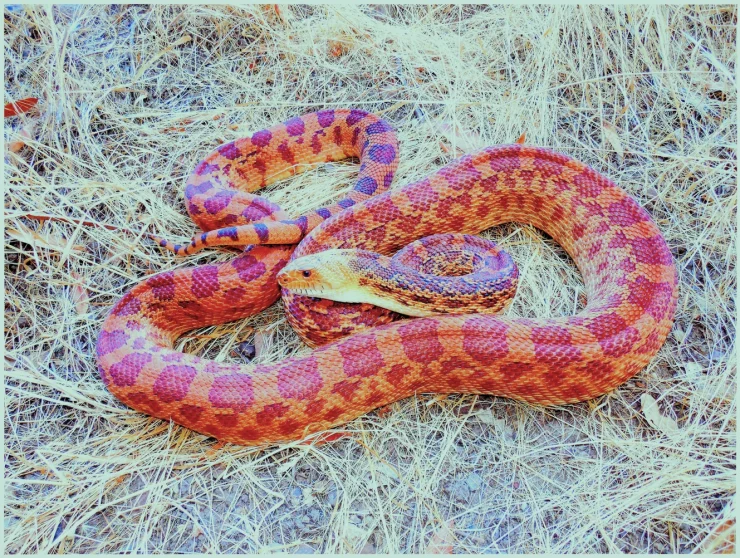
Furthermore, a few, such as Pituophis melanoleucus lodingi lose their pattern completely as they mature and become completely “melanistic” dark brown or black as adults.
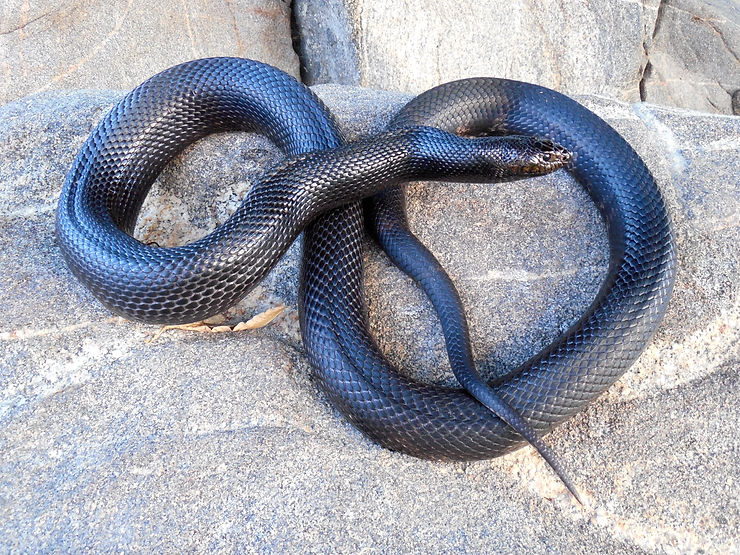
Many Pituophis also have darker markings toward the rear and front of their bodies while they are much lighter at the mid-body which makes them appear as two or three different kinds of snakes in one body.
Below is Pituophis catenifer sayi BULL SNAKE wild caught from Kankakee County, Illinois. Besides having 3 distinct colors, it also sports the 3 main patterns that change from head to tail region, as if it were 3 different snakes. This wild collected tri-color male, I kept and bred to others of the same locality and named him Michael. He sired many young.
Image By Patrick Houston Briggs.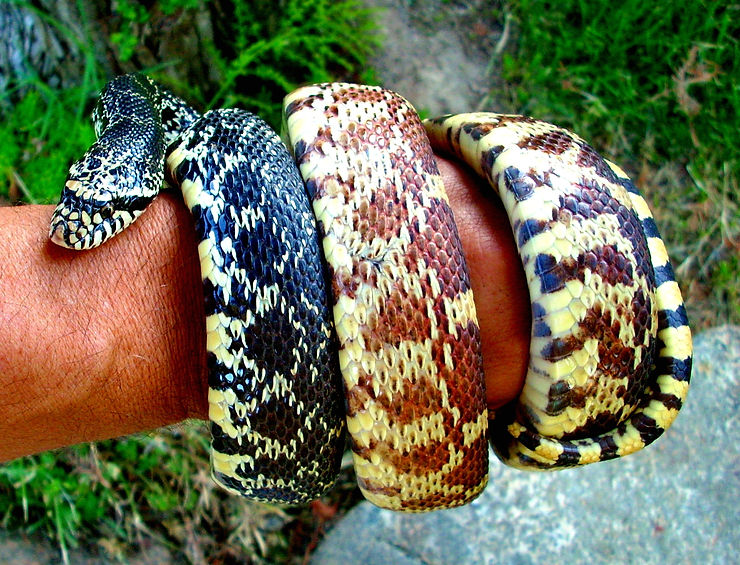
Pituophis deppei jani NORTHERN MEXICAN PINE SNAKE subadult
Photo Image by Patrick Houston Briggs, November 2014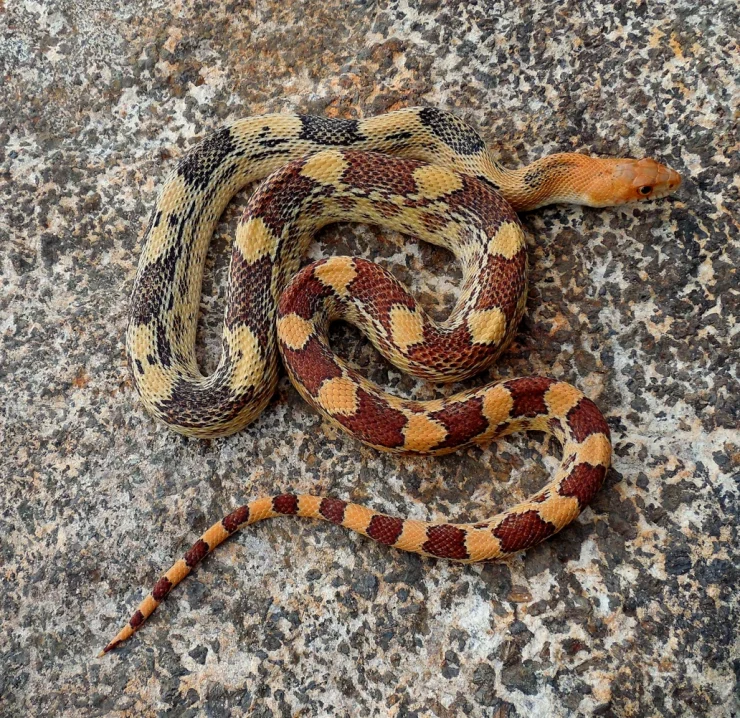
Pituophis vertebralis vertebralis CAPE or BAJA CALIFORNIA GOPHER SNAKE

Pituophis Temperament
By Patrick Briggs
Temperament of different Pituophis can vary just as much from one individual to another as it can from different species or races. I’ve always been impressed at the tenacity of some of these reptiles that have been cornered in their lair or feel threatened. Indeed, if one that has a nasty temper is agitated, heavy breathing and muscular coils are deliberately flexed and relaxed by its sinuous body, and it may slowly slither along or back up sideways on large half loops, and with the head boldly raised and flattened, and the rear of the jaw spread further apart, the tongue might extend and slowly rise and lower, or the bifurcated tip may droop downward. At the same time, an intense raspy hissing is amplified as inhaling and exhaling of air is emitted through an air hole that passes by a cartilaginous membrane flap or pre-glottal keel (epiglottal keel) jutting upward and down the center from the front of the glottis opening. The glottis is an air opening at the floor of the mouth behind the base of the tongue.
By Patrick Briggs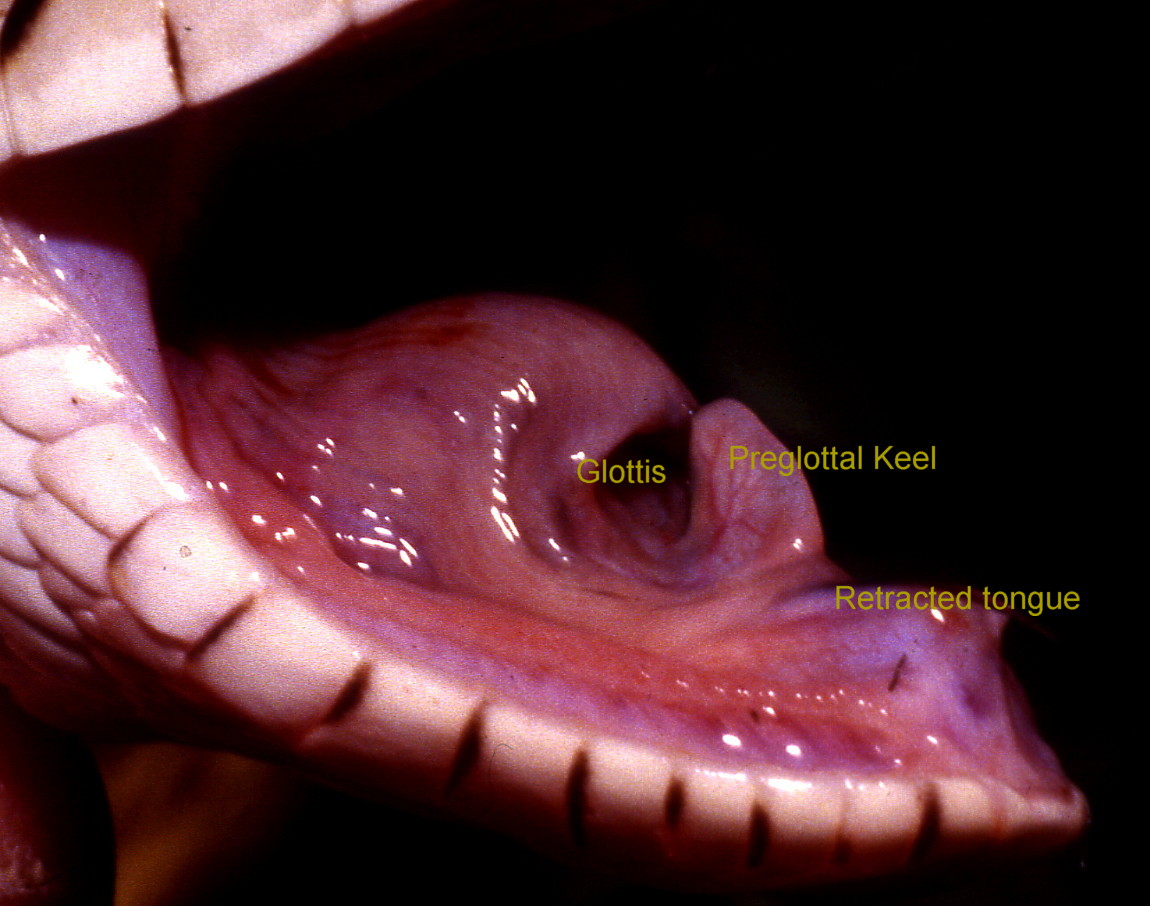
Furthermore, as penetrating eyes of the focused head fixed intently on the movements of the intruder, the tail, like a rattlesnake without its rattle, shakes and rapidly vibrates against the ground with determination, and may produce sound to intimidate an intruder. All of these adaptive behaviors and survival tools work in conjunction one with another to become part of a bluffing strategy and effective mechanism to fool any menacing predator into believing its potential prey is an irascible creature or a scaly devil far too treacherous to manage. If that isn’t enough, repeated strikes to bite, sometimes lurching the body forward and off the ground towards the intruder should hasten a decision for it to retreat and search out other prey. This predator diversion allows the magnificent ophidian to finally become pacified, and slowly slither away, and having again, survived, go on its merry way.
Most captive Pituophis that are regularly handled will stop this bluffing or striking, and they will become easily handled shortly after capture. They may temporarily return to this bluffing or striking again if placed outside on the ground in the sun for few minutes or so and an attempt is made to grab them as they escape and tire. If an attempt to pick them up is made when they are exhausted, the tail will again vibrate, and they will usually strike.
AGE
Bull snakes, pine snakes, and gopher snakes in the wild can average a life span from about 12-15 years, but many ophidians of this genus have lived over 35 years in captivity. They grow the most within the first 4 years, but when there is plenty of prey to feed on during warmer times, they will also grow faster, and although their growth will slow down significantly as they grow older and during brumation, they never stop growing. Many grow to about 4-5 feet, but some can reach lengths as long as 6-8 feet.
The wild collected male adult gopher snake Pituophis catenifer annectens below was from Arroyo Verde Park in Ventura, California and was brought to live in a vivarium in the biology department of Ventura College. When I photographed it, this individual had been there 27 years. It lived several years longer.
Digital Image by Patrick Houston Briggs, Courtesy Ventura College Biology Department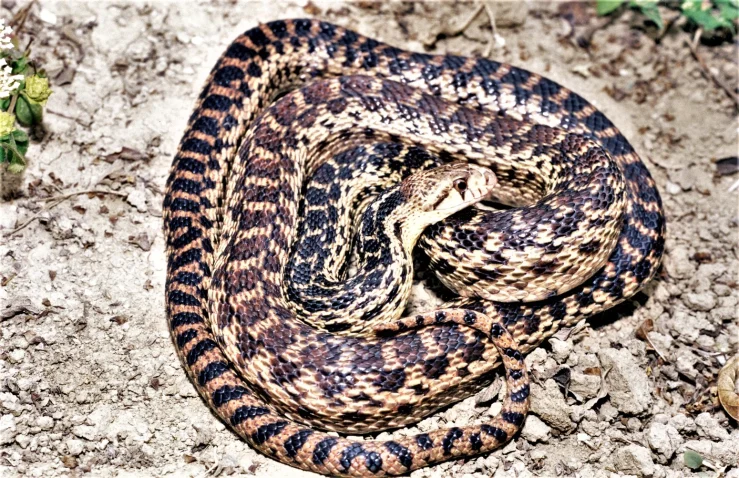
Sean McKeown, on the left, herpetologist for the Fresno Chaffee and the Honolulu Zoo and author of several reptile books and papers as well as editor for several magazines such as Reptiles Magazine holds Blue-tongue Skinks with Patrick Houston Briggs, President of the San Joaquin Herpetological Society in the 1990’s.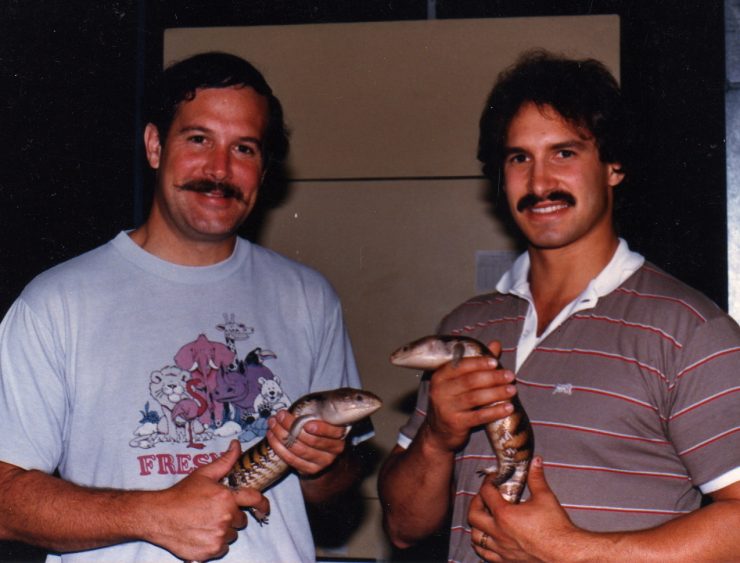
Pituophis catenifer catenifer PACIFIC GOPHER SNAKE Hanford California locality,
Image by Patrick Houston Briggs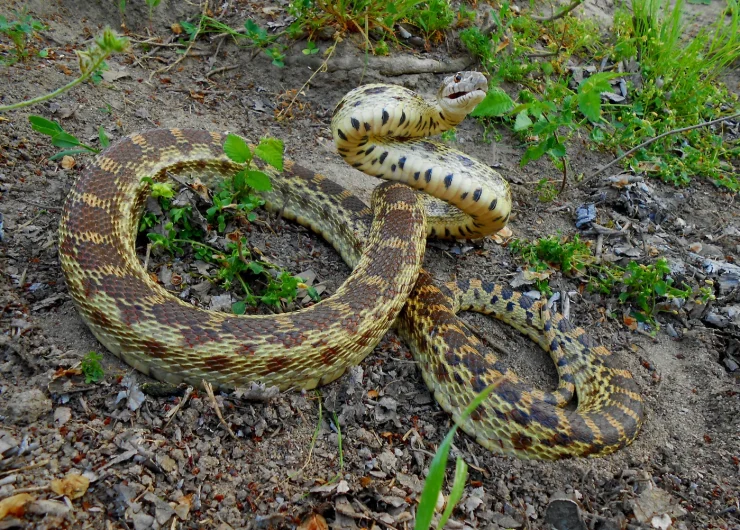
Pituophis ruthveni LOUISIANA PINE SNAKE This was my young adult male from Bienville Parish, Louisiana locality parent stock,
Image By Patrick Houston Briggs from 2014 clutch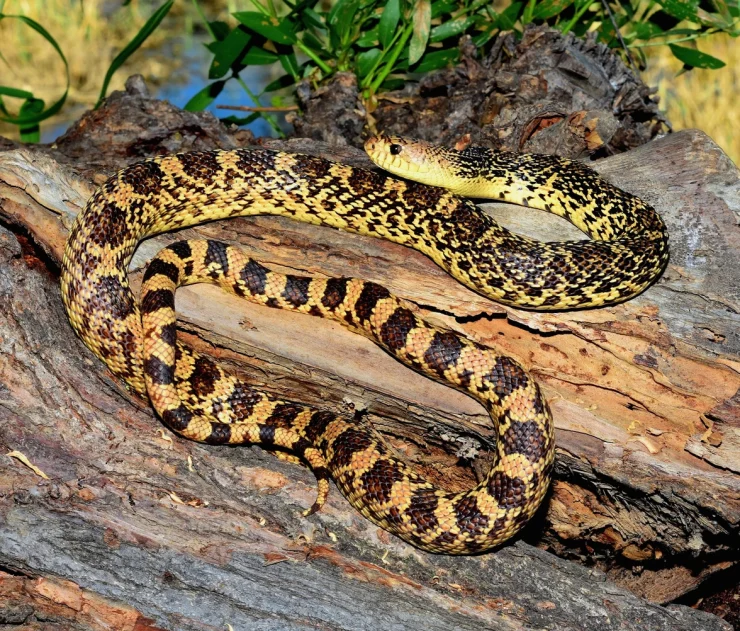
All Known Pituophis in the World
1. Pituophis catenifer affinis (Hollowell, 1852) Sonoran Gopher Snake
2. Pituophis catenifer annectens (Baird & Girard, 1853) San Diego Gopher Snake
3. Pituophis catenifer catenifer (Blainville, 1835) Pacific Gopher Snake
4. Pituophis catinifer coronalis (Klauber, 1946) “extinct” Coronado Island Gopher Snake
5. Pituophis catenifer deserticola (Stejneger, 1893) Great Basin Gopher Snake
6. Pituophis catenifer fuliginatus (Klauber, 1946) San Martin Gopher Snake
7. Pituophis catenifer pumilis (Klauber, 1946) Channel Islands Gopher Snake
8. Pituophis catenifer sayi (Schlegil, 1837) Common Bull Snake
9. Pituophis deppei deppei (Dumeril, 1853) Mexican Pine Snake
10. Pituophis deppei jani (Cope, 1860) Northern Mexican Pine Snake
11. Pituophis insulanus (Klauber, 1946) Cedros Island Gopher Snake
12. Pituophis lineaticollis lineaticollis (Cope, 1861) Cincuate Bull (Mexican-Lined bull)
13. Pituophis lineaticollis gibsoni (Stuart, 1954) Guatamalan Bull (Gibson’s bull snake)
14. Pituophis melanoleucus lodingi (Blanchard, 1924) Black Pine Snake
15. Pituophis melanoleucus melanoleucus (Daudin, 1803) Northern Pine Snake
16. Pituophis melanoleucus mugitus (Barbour, 1921) Florida Pine (Southern pine snake)
17. Pituophis ruthveni (Stull, 1929) Louisiana Pine Snake
18. Pituophis vertebralis bimaris (Blainville, 1835) Mid-Baja California Gopher Snake
19. Pituophis vertebralis vertebralis (Blainville, 1835) Cape Gopher Snake
*Vertebralis and Bimaris are sometimes considered Pattern Classes of Vertebralis. (e.g. L. Grismer 2002)
Other authorities place them as subspecies of catenifer. I’ve listed them as vertebralis species and bimaris & vertebralis subspecies.
In the future, we may soon find other Pituophis warranting nomenclatorial distinction.
PITUOPHIS RANGE MAP by Patrick Houston Briggs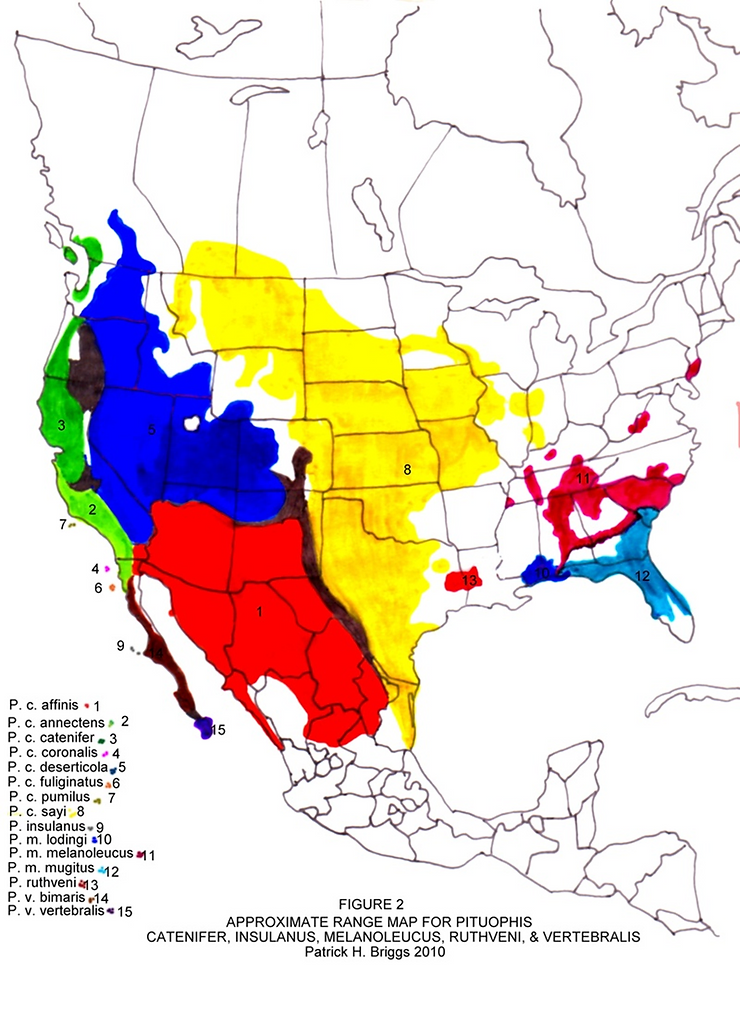
PATRICK HOUSTON BRIGGS PITUOPHIS

Pituophis insulanus CEDRO ISLAND GOPHER SNAKE
(Image Courtesy to Chris Mattison, See: Amphibians and Reptiles of Baja California Including Its Pacific Islands And The Islands In The Sea Of Cortes, page 300, L. Lee Grismer) below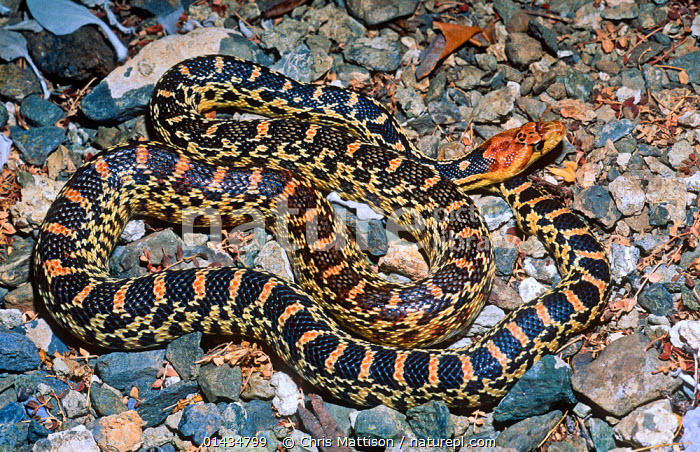
Pituophis melanoleucus lodingi BLACK PINE SNAKE laying eggs.
Photo Image By Patrick Houston Briggs below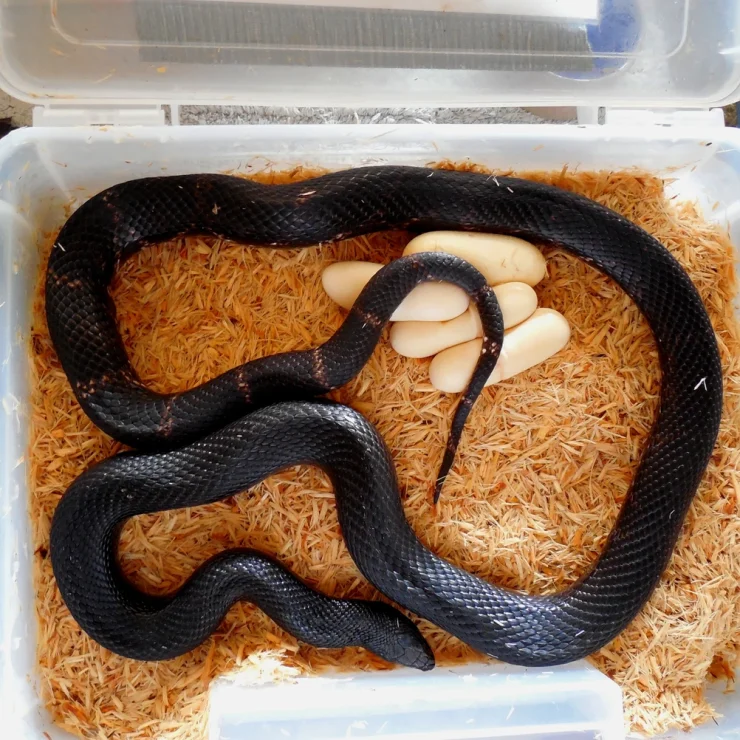
Pituophis lineaticollis gibsoni GUATEMALA or GIBSON’S BULL SNAKE
(Middle American Subspecies)
One of my subadults Image below By Patrick Houston Briggs 2013
(These were first obtained from Antigua, Guatemala and bred by John Ginter)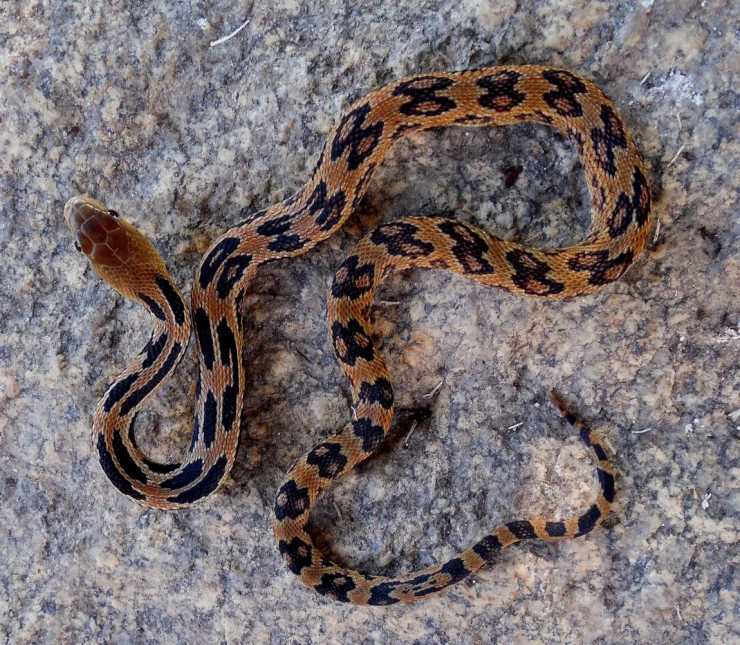
Pituophis vertebralis vertebralis CAPE BAJA CALIFORNIA GOPHER SNAKE Adult male, Image By Patrick Houston Briggs 2000, courtesy John Ginter below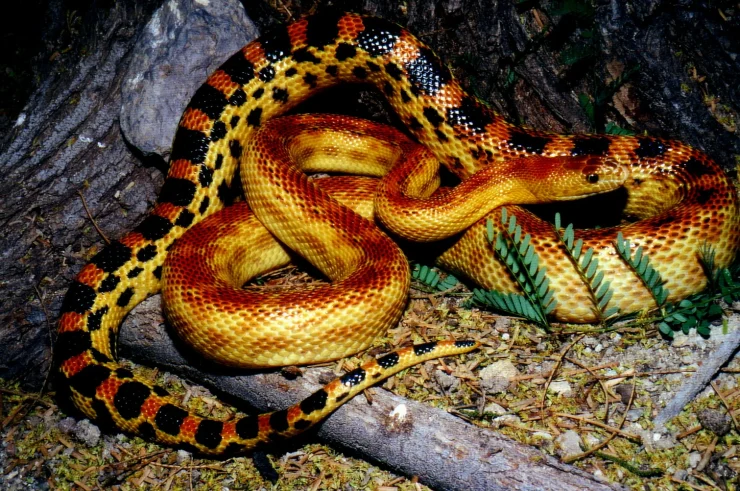
Pituophis catenifer sayi BULL SNAKE, Kansas locality adult female,
Image By Jeremy Huff below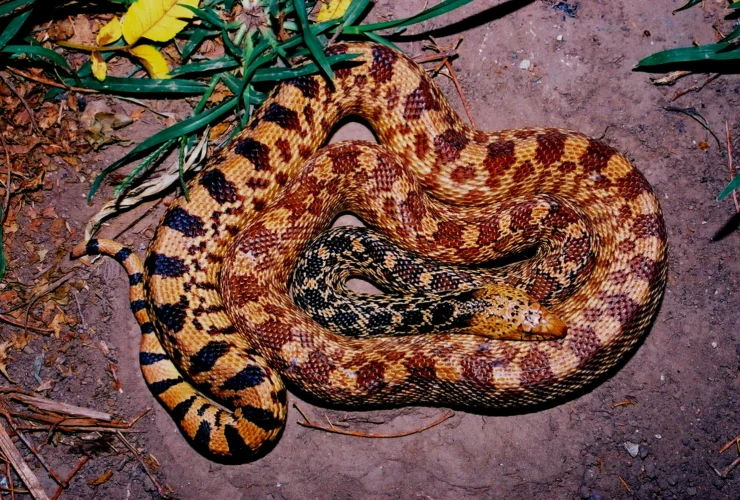
(Image Courtesy San Diego Society of Natural History Museum) BELOW
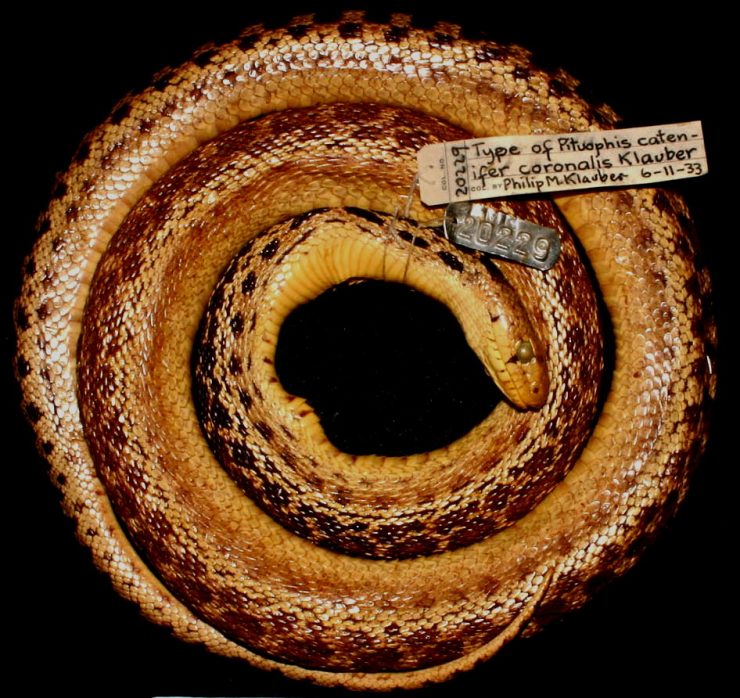
Image By Patrick Houston Briggs
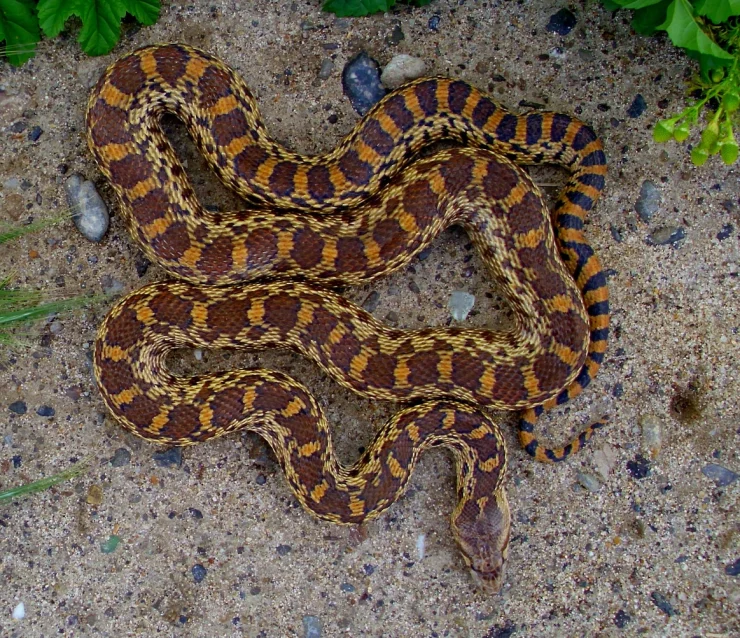
Pituophis catenifer fuliginatus SAN MARTIN ISLAND GOPHER SNAKE, an old male
Photo Image by Patrick Houston Briggs 2000 (courtesy John Ginter)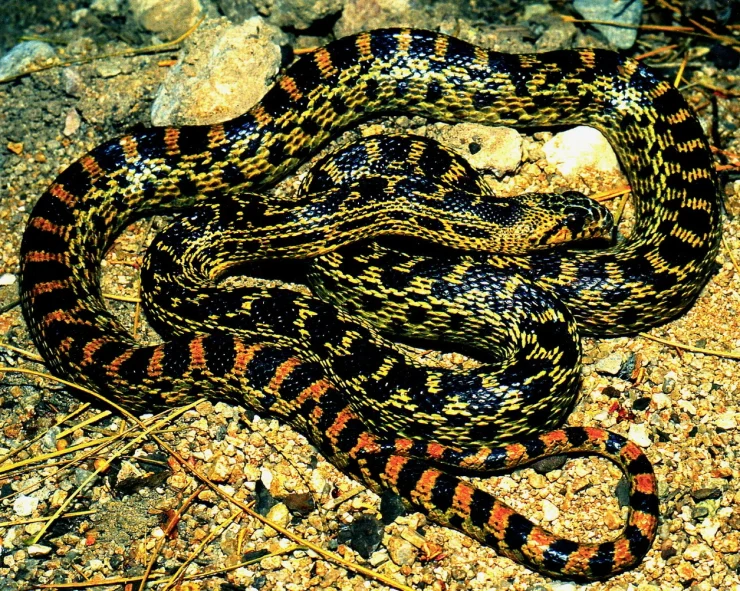
Pituophis deppei jani NORTHERN MEXICAN PINE SNAKE
Image by Patrick Houston Briggs 2000, (Courtesy John Ginter)
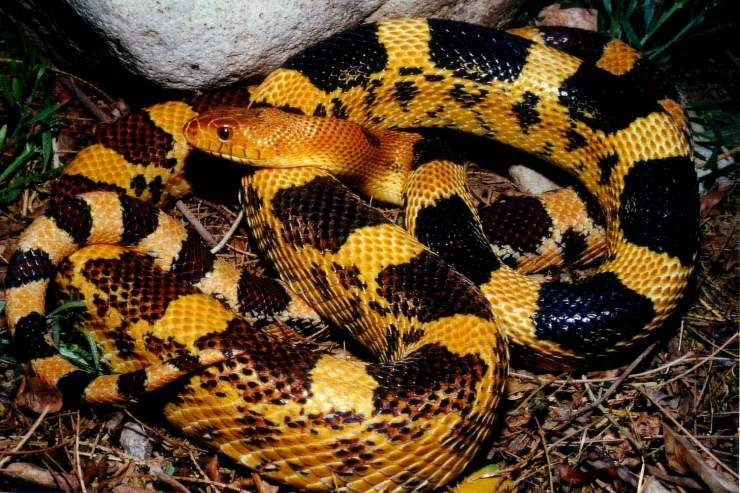
Pituophis lineaticollis lineaticollis Mexican Lined “Cincuate” Bull Snake
(A Middle American Subspecies)
Subadult Image By Patrick Houston Briggs 2000, courtesy Tom Moisi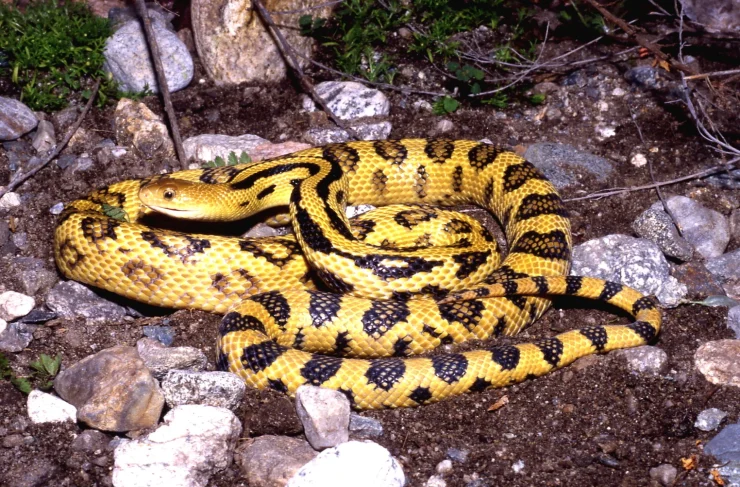
Pituophis deppei jani NORTHERN MEXICAN PINE SNAKE My adult yellow phase male
By Patrick Houston Briggs 2000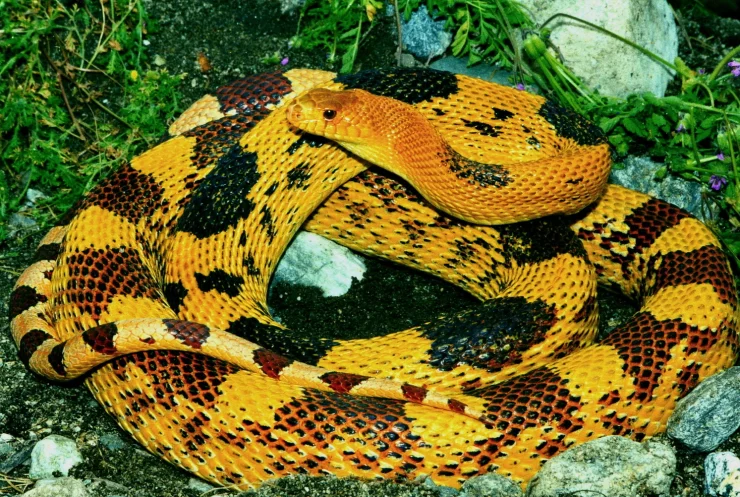
Pituophis catenifer deserticola GREAT BASIN GOPHER SNAKE locality Fernly, Nevada, Image By Patrick Houston Briggs, courtesy to Jerry Hartley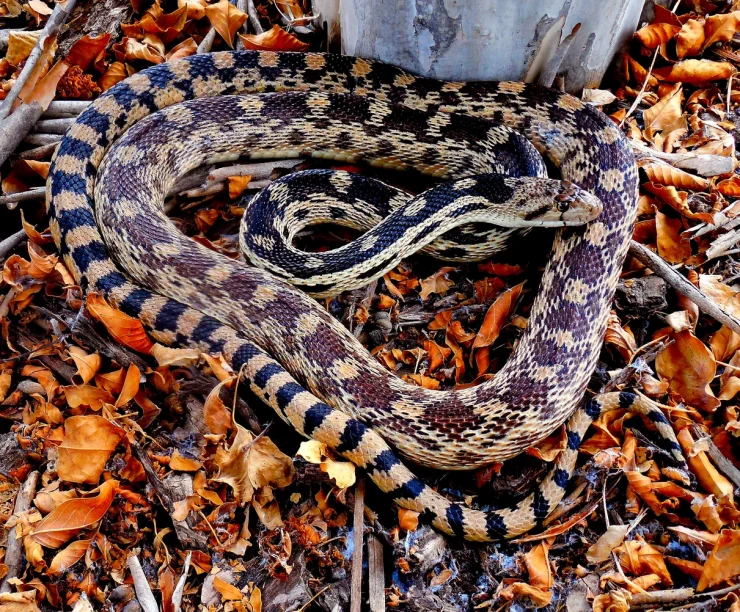
Pituophis melanoleucus mugitus FLORIDA or SOUTHERN PINE SNAKE patternless
By Patrick Houston Briggs 2000, Courtesy Rick Smith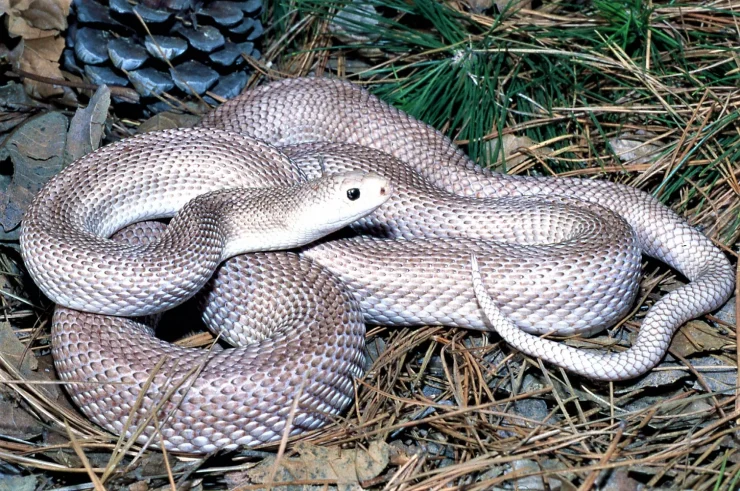
Pituophis melanoleucus melanoleucus NORTHERN PINE SNAKE large adult female Image By Patrick Houston Briggs 1994, courtesy Lloyd & Sonnie Lemke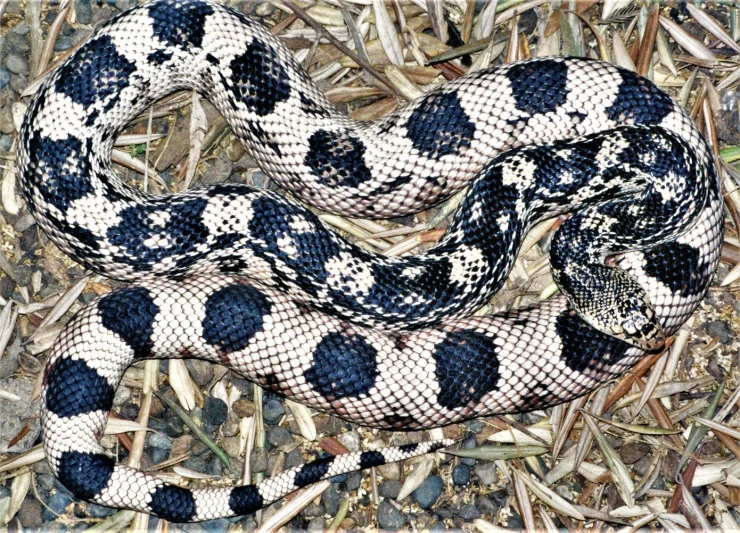
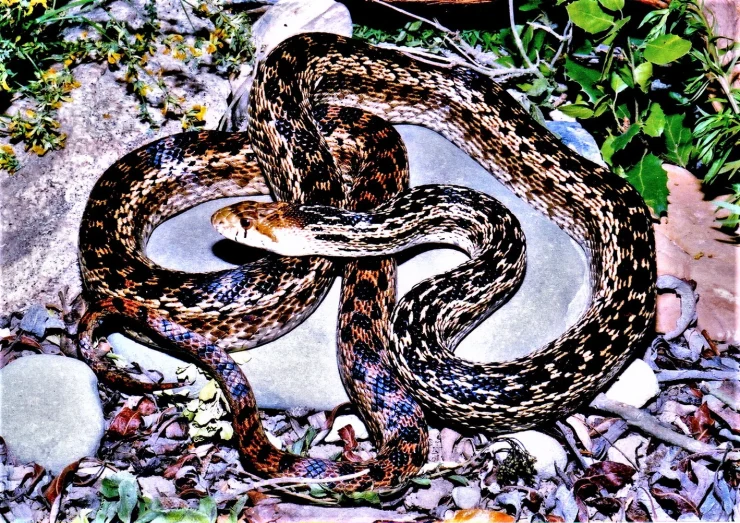
Pituophis deppei deppei MEXICAN PINE SNAKE Durango Mountain locality Adult Male, Image by Patrick Houston Briggs 2000, Courtesy Tom Moisi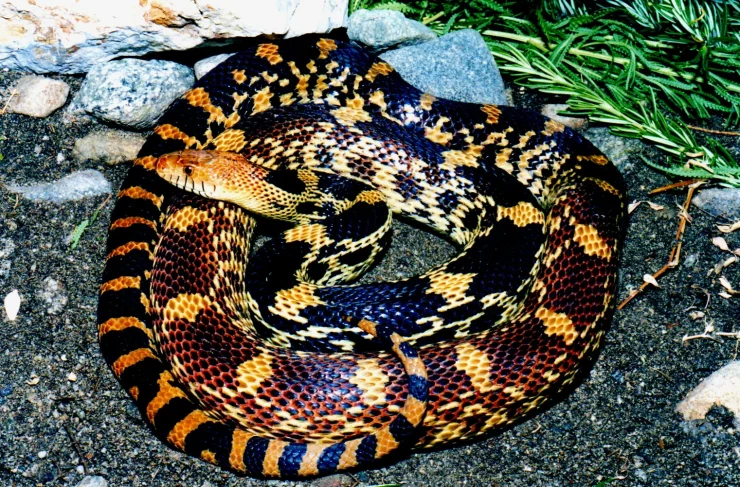
Pituophis catenifer affinis SONORAN GOPHER SNAKE adult male
Parent Stock from Christmas Mountains in Texas, Image By Patrick Houston Briggs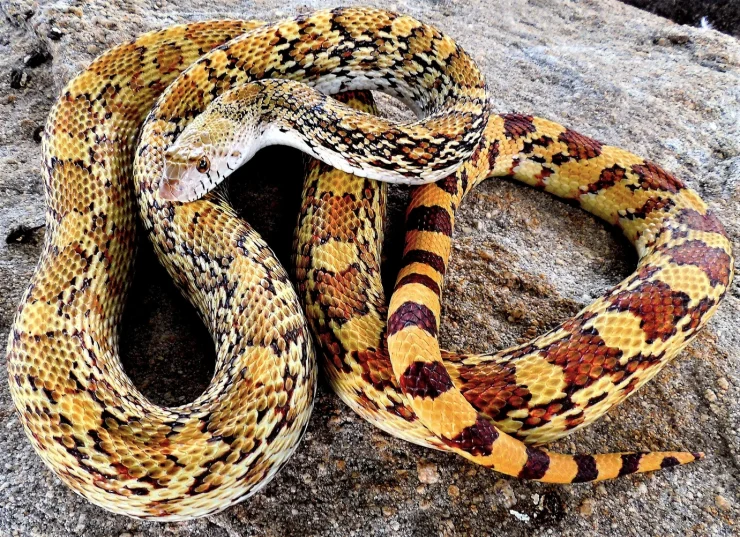
Pituophis vertebralis bimaris MID-BAJA CALIFORNIA GOPHER SNAKE adult female
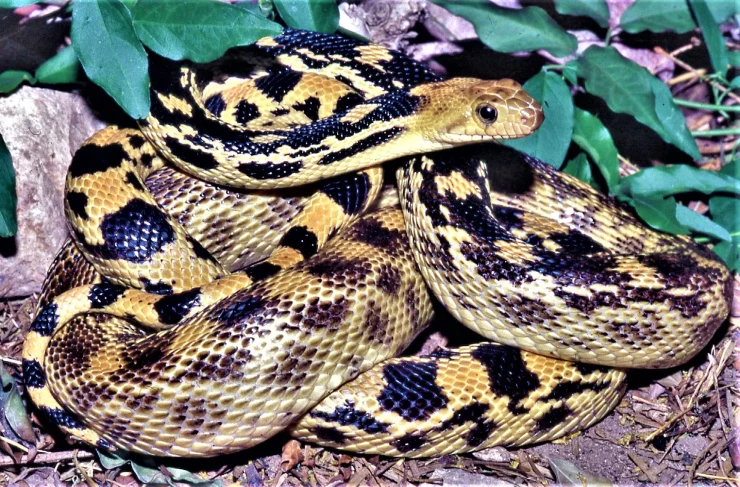
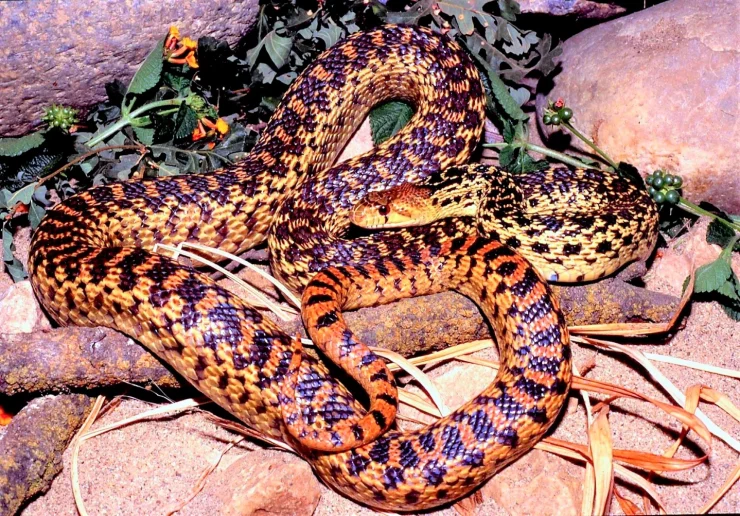
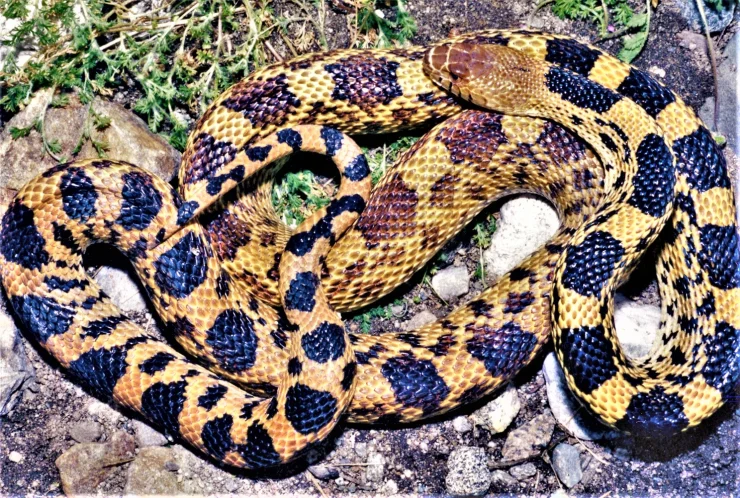

Jerry Hartley and Patrick Briggs around 2013
Image taken by Pete Marshall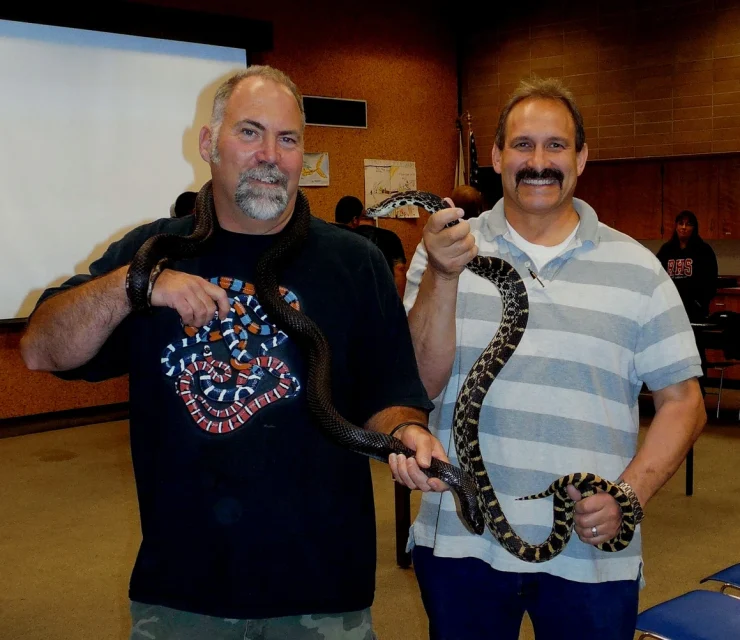
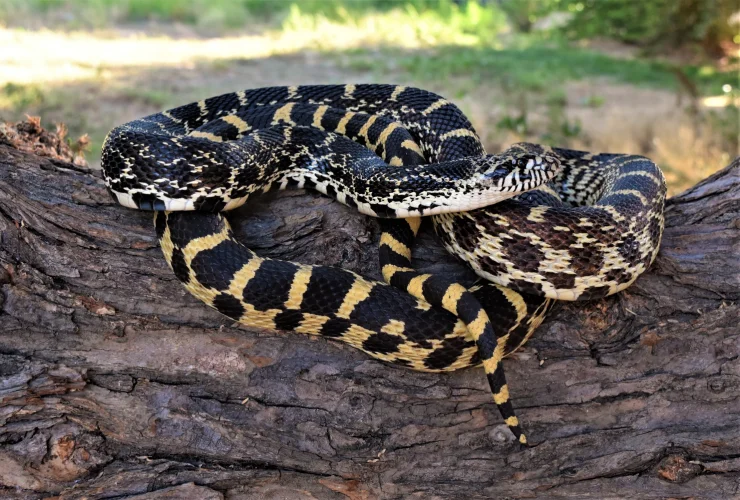
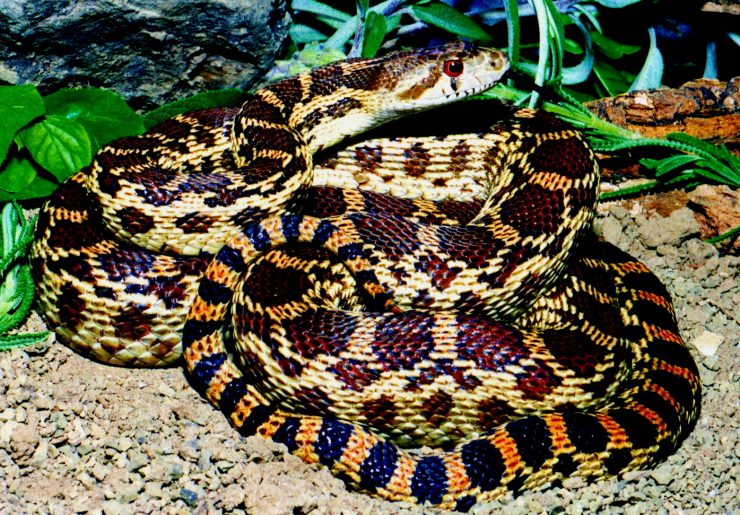
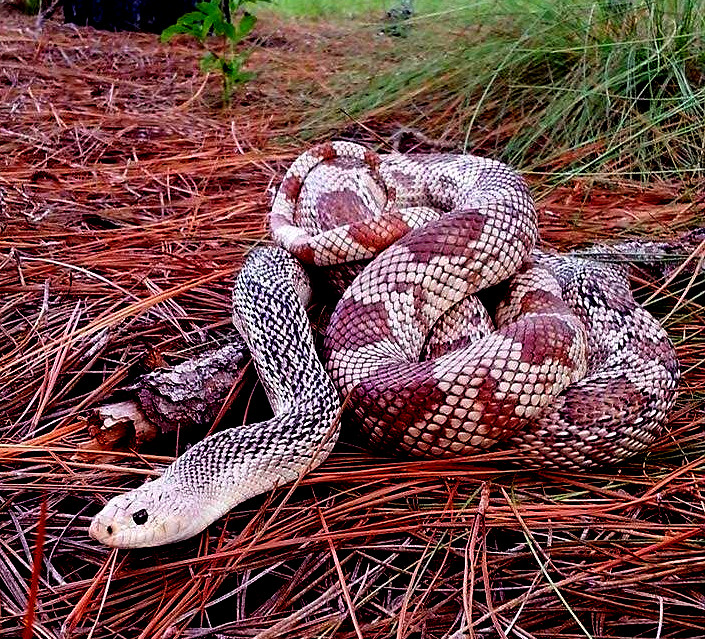
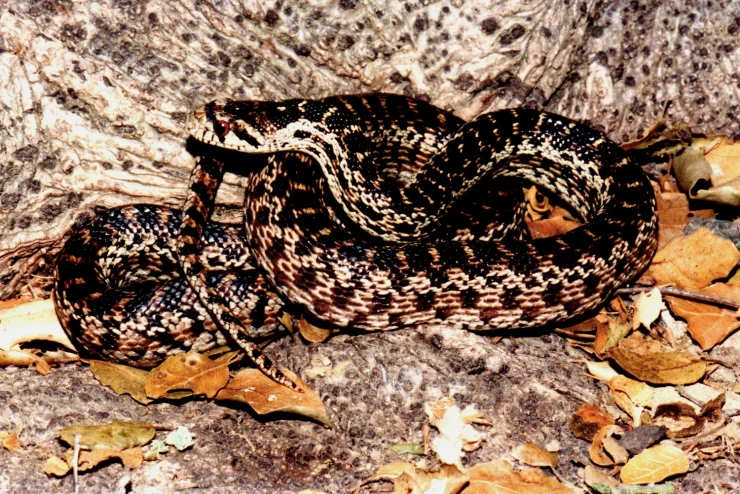
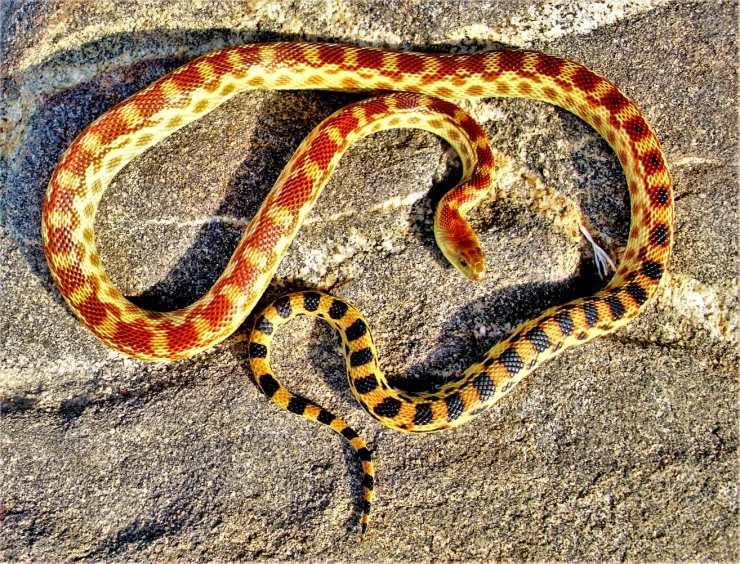



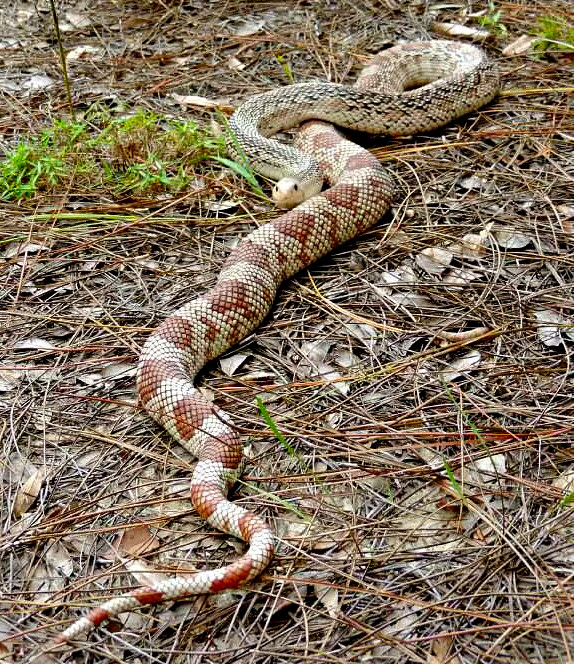
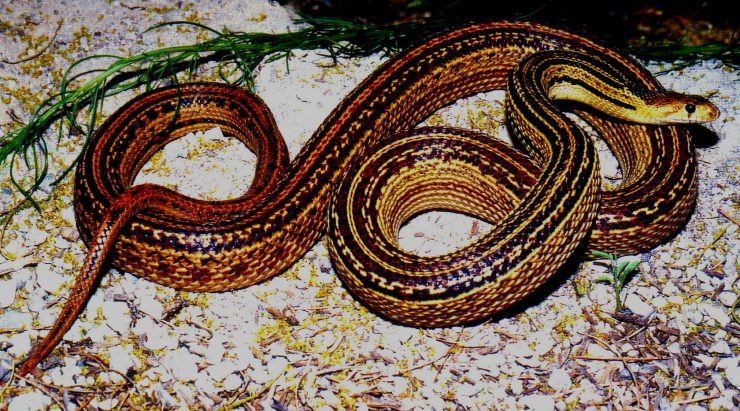
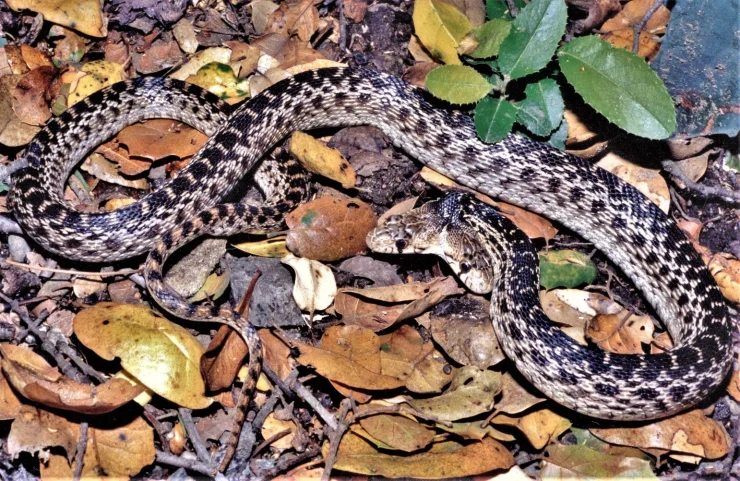
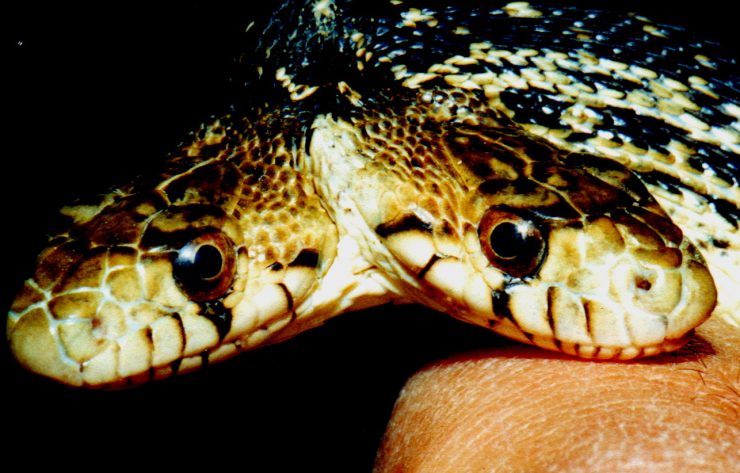
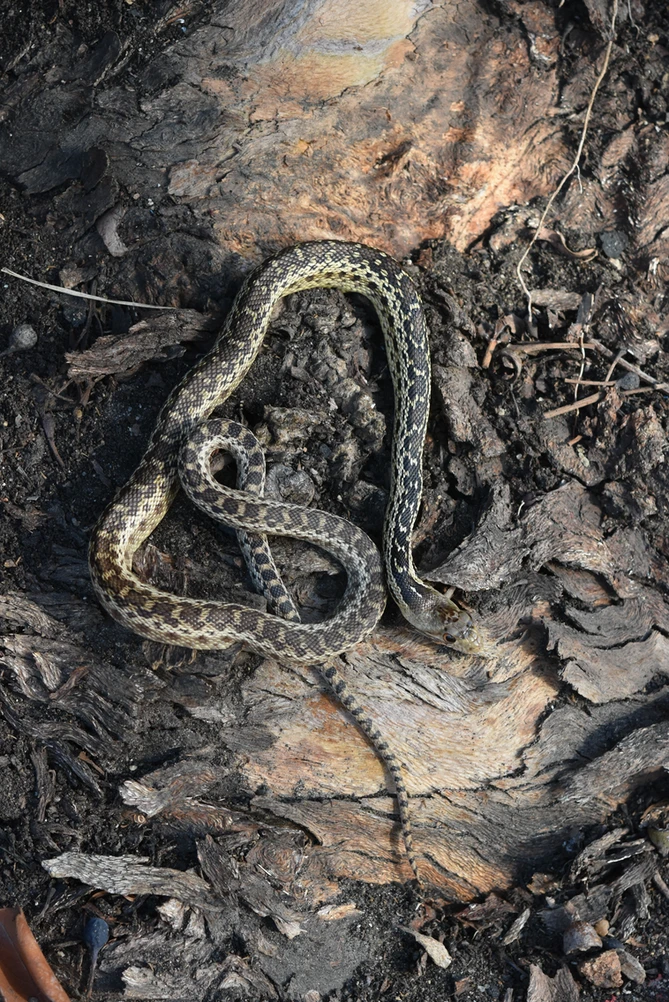
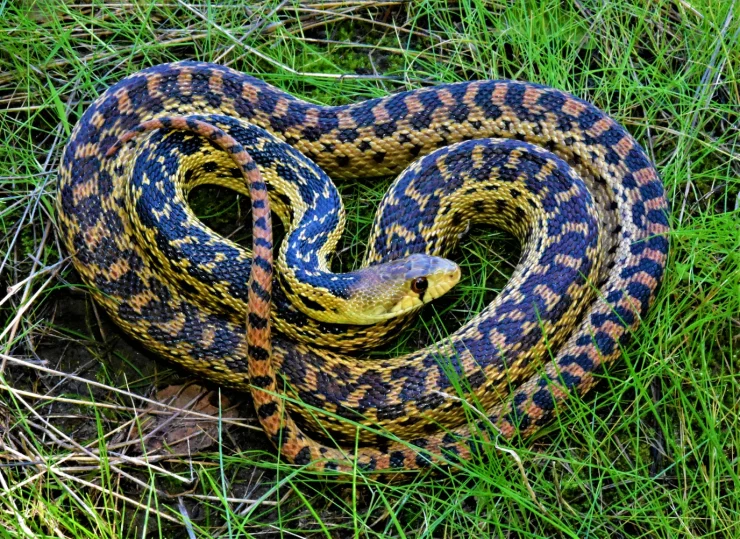
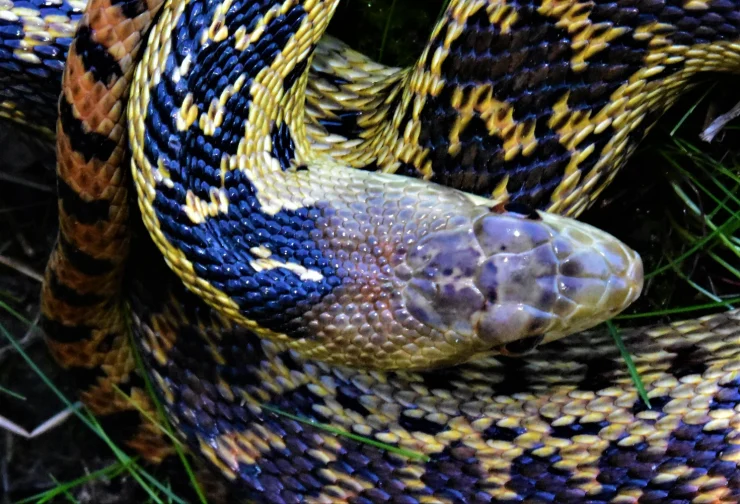
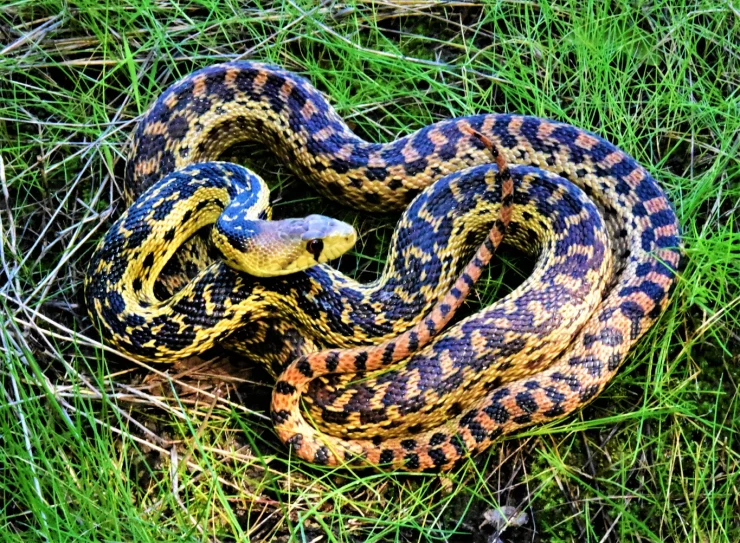
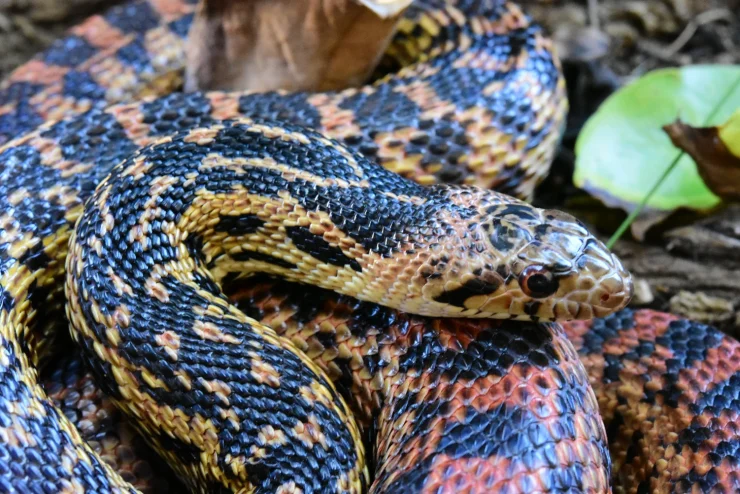
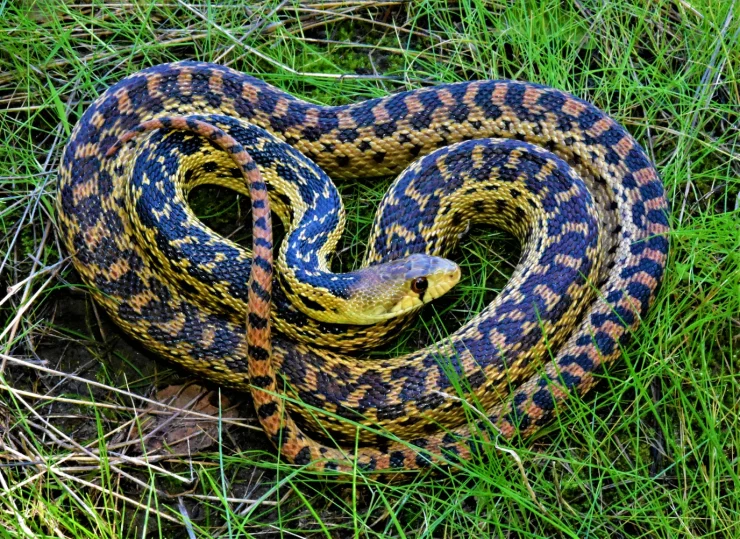
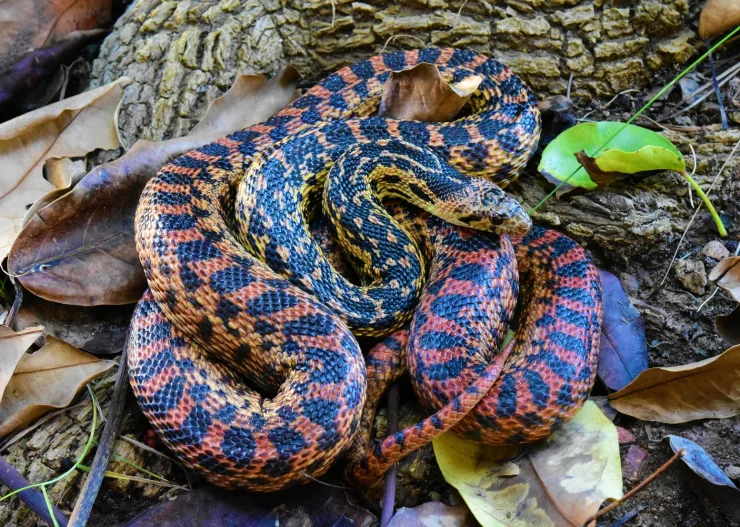
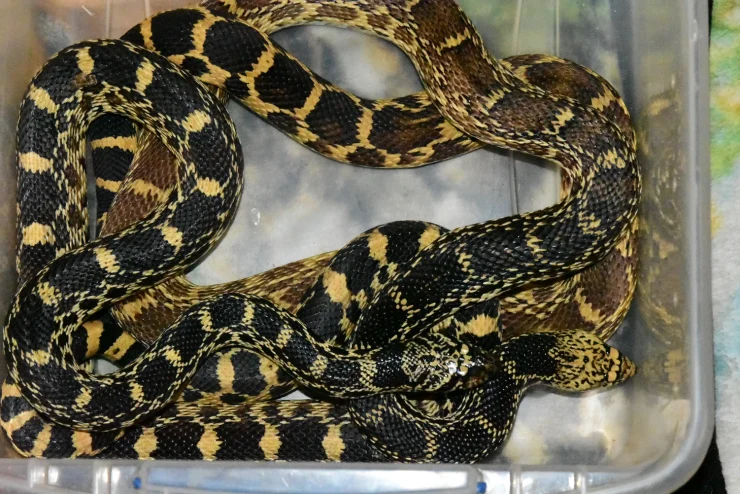
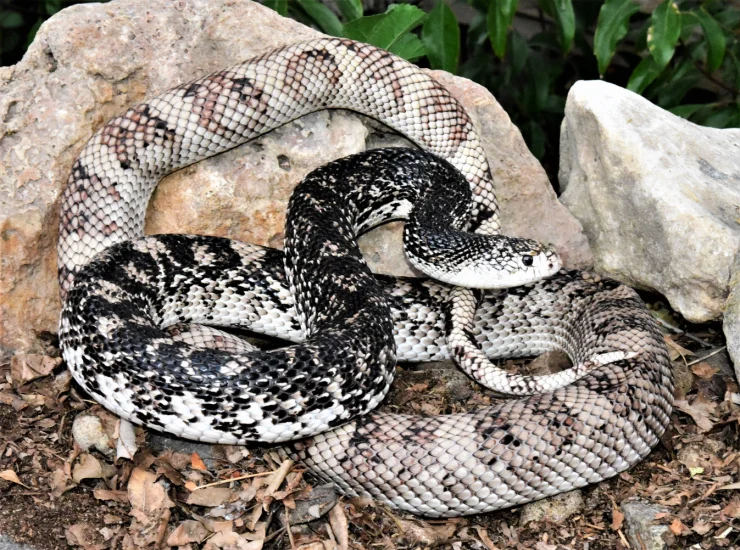
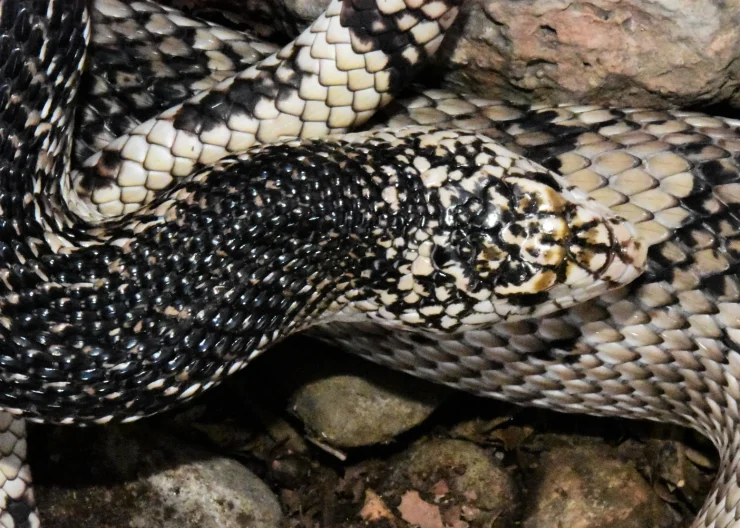
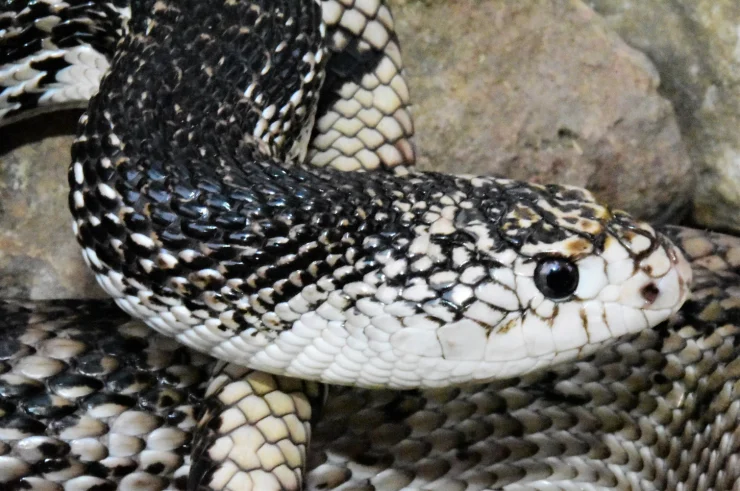
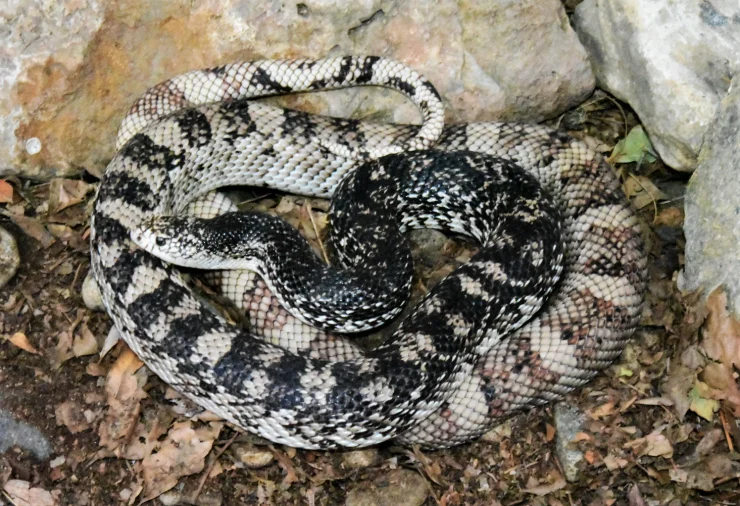
Pituophis melanoleucus melanoleucus Northern Pine Snake amelanistic patternless
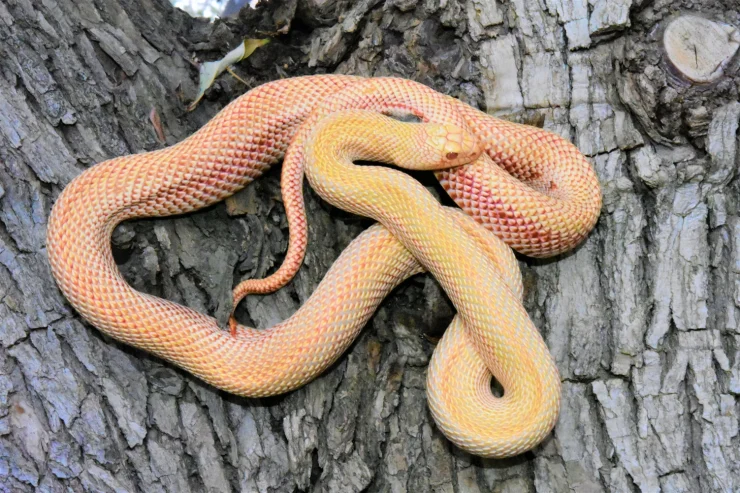
Pituophis melanolueucs lodingi BLACK PINE SNAKE light belly view neonate
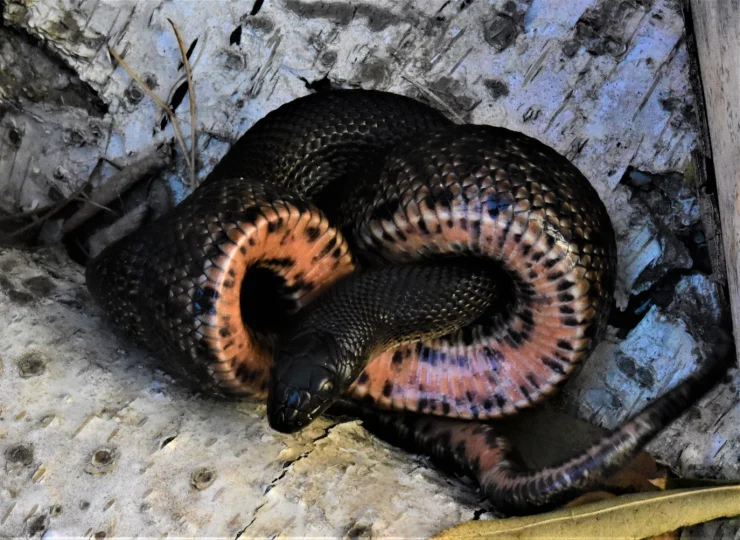
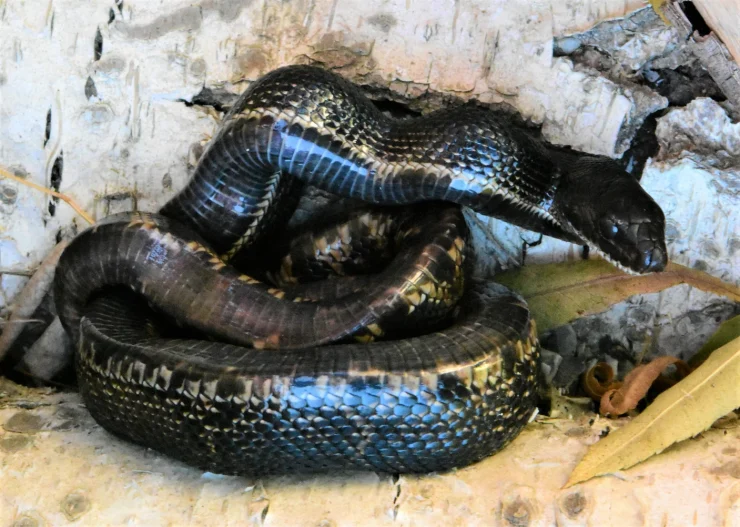
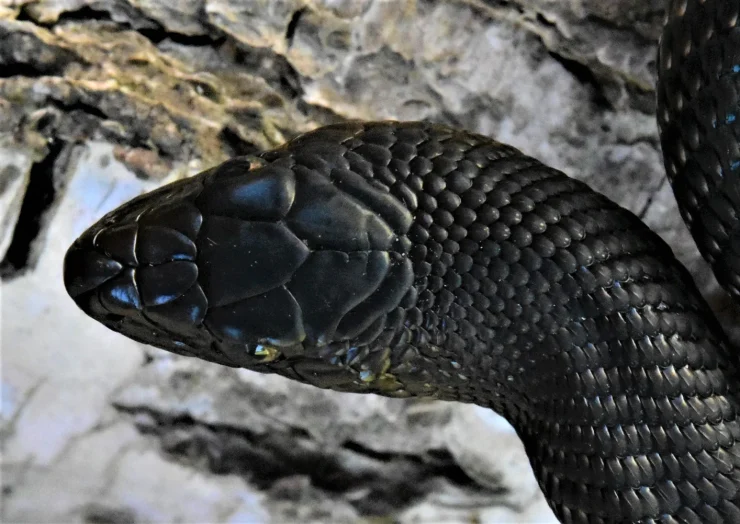
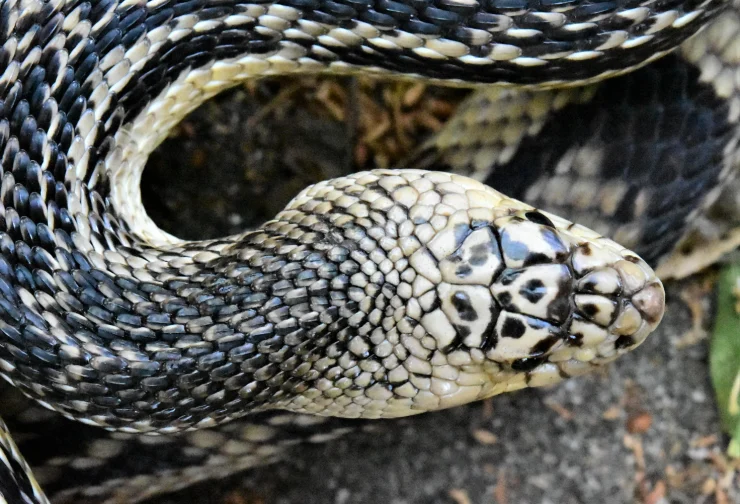
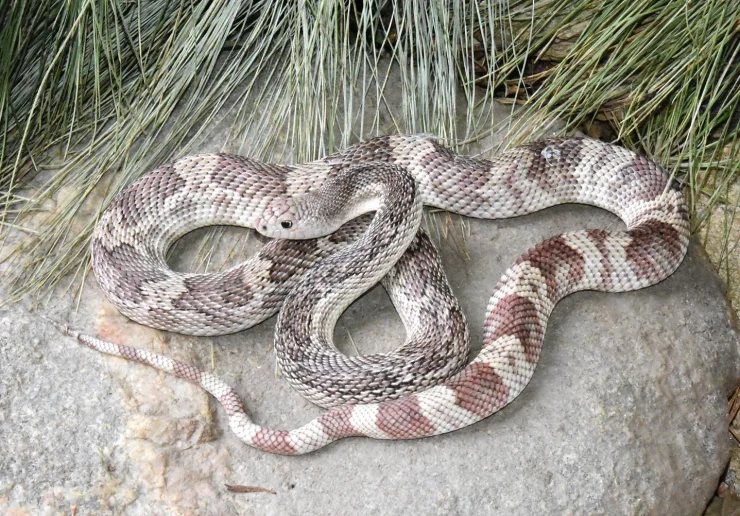
See: The Pituophis Parade article on all forms of gopher, bull, and pine snakes and photos
This magazine image and the 3 snake pictures on the magazine cover-page
by Patrick H. Briggs in this issue of Reptiles Magazine over 2 decades ago.